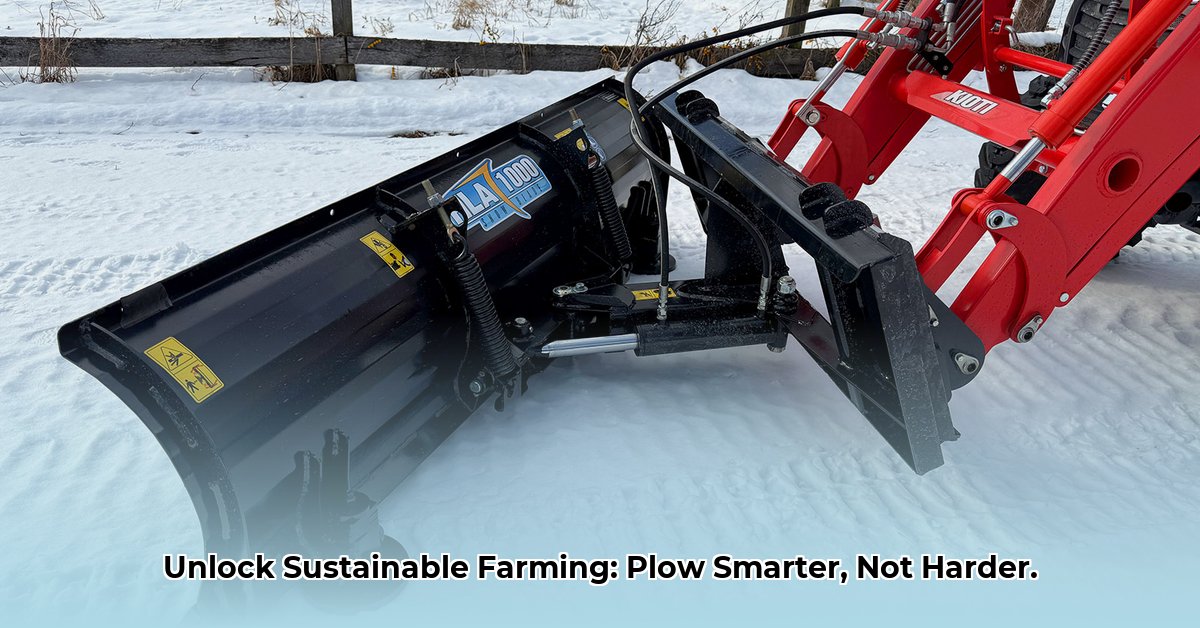
Picking the right tractor plow blade is a critical decision for any farmer, impacting soil health, operational costs, and environmental sustainability. This guide provides actionable steps to select the best blade for your farm, balancing efficiency with eco-conscious practices. For more detailed information on blade types, check out this helpful resource: Tractor Blade Guide.
Understanding Your Farming Needs
Before choosing a blade, assess your specific needs:
Farm Size: Larger farms may require wide blades for efficient snow removal, while smaller operations benefit from maneuverable, smaller blades. The right size is key to maximizing productivity without unnecessary effort or fuel consumption. Do you need to cover vast expanses quickly? Or can you work more methodically?
Soil Type: Heavy clay soils require robust blades to prevent excessive compaction, while lighter, sandy soils may tolerate lighter-duty blades. Soil compaction significantly affects drainage and crop yields. What type of soil do you have, and how susceptible is it to damage?
Snowfall: Heavier snowfall necessitates durable blades capable of withstanding intensive use. Lighter snowfall may allow for a less robust, more environmentally friendly option. How much snow do you typically receive, and what intensity are we talking about? Heavy, wet snow requires different consideration than light, fluffy snow.
Plow Blade Materials: Steel vs. Poly
The material of your blade impacts its lifespan and environmental footprint:
Steel Blades: Known for durability and strength, steel blades handle harsh conditions effectively. However, steel production carries a significant environmental cost. While recyclable, the process isn't always straightforward or cost-effective for all farmers. "Steel blades are the workhorses of snow removal, but their environmental impact shouldn't be ignored," says Dr. Emily Carter, Agricultural Engineer at the University of California, Davis.
Poly (Plastic) Blades: A more sustainable alternative, they are generally lighter, require less energy for operation, and resist rust. Although possibly less robust than steel in extreme conditions, their lower environmental impact often outweighs some durability trade-offs. Poly blades offer a balance between performance and sustainability that many farmers find perfectly adequate. "We've seen a significant increase in the adoption of poly blades due to their lower environmental footprint," notes John Miller, Farm Manager at Green Valley Farms.
Choosing the Right Tractor Plow Blade: A Step-by-Step Guide
Follow these steps for informed blade selection:
Assess Your Farm: Analyze farm size, soil type, and typical weather patterns. This foundational step ensures the blade you choose matches your operational needs effectively.
Material Selection: Weigh the pros and cons of steel and poly blades, factoring long-term costs and environmental impact. Consider the blade's lifespan and its impact on both your bottom line and the environment.
Explore Options: Research available blade sizes and designs from reputable suppliers. Don't rush; compare features, pricing, and sustainability claims carefully.
Ensure Compatibility: Verify the blade's compatibility with your tractor's lifting capacity and hitch system. Proper fitting is crucial for safe and efficient operation. A mismatch can lead to damage or accidents.
Prioritize Safety: Always adhere to the manufacturer's instructions regarding safe operation and maintenance. Regular maintenance is crucial for both safety and longevity.
Keeping Your Farming Eco-Friendly: A Broader Perspective
Sustainable farming extends beyond blade selection. Minimize soil compaction by using lighter blades when appropriate and employing efficient snow removal techniques. Efficient snow removal reduces tractor fuel consumption, lowering your carbon footprint.
Remember, your plow blade choice is a long-term investment in your farm's future and environmental stewardship. By considering these factors, you can make a decision that benefits both your operation and the planet.
Key Takeaways:
- Choosing the right blade is essential for efficient snow removal and minimized soil compaction.
- Consider farm size, soil type, and typical snowfall when selecting a plow.
- Different plow types (V-plow, angle plow, etc.) have varying advantages and suit different conditions.
- Understanding blade materials and their impact on soil compaction is vital for sustainable farming practices.
- Proper maintenance and alignment ensure optimal performance and longevity, extending the blade’s useful life.